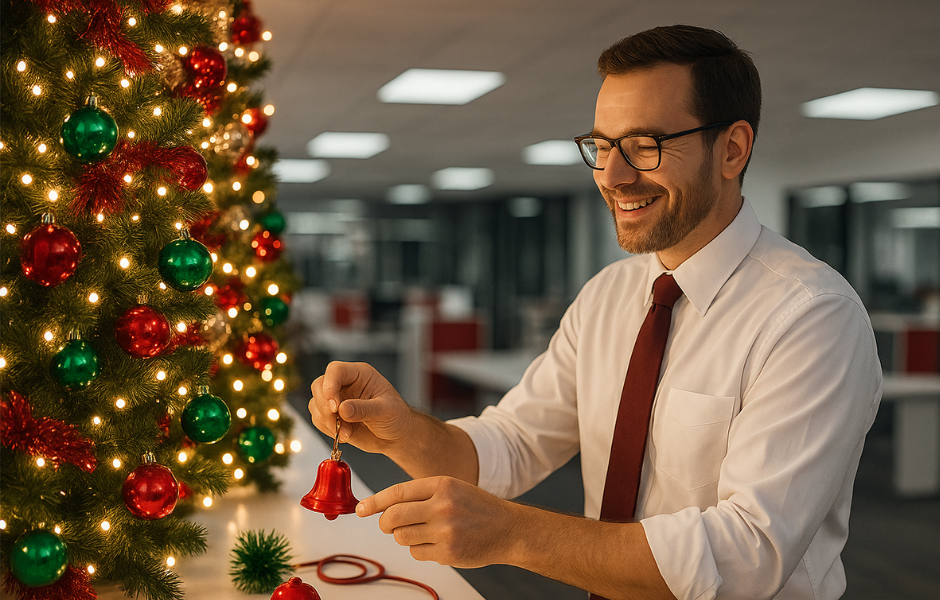
Make Fire Safety a Priority This Holiday Season
The holiday season brings energy, celebration, and increased activity to businesses, schools, healthcare facilities, and residential environments. It also brings a greater level of risk. Decorations, gatherings, seasonal equipment, and heavier electrical demands all contribute to a rise in fire incidents every December and January.
For organizations responsible for the safety of occupants, this time of year is not only about festive planning. It is a period when life safety systems must perform at their best. Ensuring your fire alarm system is properly tested and inspected becomes a critical step in maintaining a safe and compliant environment.
Why Holiday Fire Safety Requires Greater Attention
Fire hazards during the holidays trend upward every year. National data consistently shows that electrical malfunctions, overloaded circuits, and ignition from decorative materials increase significantly in winter months. Many of these incidents occur in buildings that have not been recently inspected or where unnoticed system deficiencies compromise detection.
Unlike a typical season, holiday conditions layer multiple risks at once.
More people on site.
More temporary electrical sources.
More distractions.
More obstacles to safe egress.
A system that has not been inspected or maintained to current standards may not detect a threat quickly enough to protect lives. This is why winter is one of the most important times for organizations to elevate their fire safety practices.
Ensuring Life Safety in High Activity Periods
Holiday events often bring higher occupancy and more movement throughout a facility. Schools host concerts and assemblies, healthcare facilities welcome more visitors, and commercial properties experience increased traffic from both staff and guests. These shifts add pressure to life safety systems that must detect an incident early and communicate clearly.
Routine fire alarm testing ensures detectors, circuits, initiating devices, and notification appliances are all functioning as intended. Early detection and timely notification remain the foundation of life safety, and consistent testing verifies that every link in the system is prepared to respond under seasonal stress.
Compliance Is More Than a Requirement
Every facility must maintain compliance with AHJ requirements, NFPA standards, and state or local regulations. During the holidays, compliance takes on added importance because many properties operate at higher capacities. A missed inspection or deferred maintenance can place a building out of code and jeopardize occupancy permits during one of the busiest times of the year.
Regulators expect fire alarm systems to perform without exception, especially during seasonal events. Regular inspections demonstrate diligence, prevent unexpected violations, and give building owners and facility teams confidence that their systems meet all mandated requirements.
The Increasing Cost of Inaction
A malfunctioning or uninspected fire alarm system can have severe consequences. Beyond property loss and operational downtime, organizations may face legal exposure if it is determined that required inspections were not completed.
Documented testing and maintenance show a clear commitment to safety. They also help support insurance claims and provide a defensible record of responsible system management. In a season when risk rises, this documentation becomes even more important for organizational protection.
The Value of Routine Inspections Throughout the Year
Identifying Issues Before They Become Failures
Routine inspections evaluate components that are often overlooked during daily operations. Technicians can identify detector contamination, wiring issues, battery failures, aging components, or software faults. Early detection prevents emergency repairs during a season when response time matters most.
Strengthening System Reliability
A well maintained system reduces false alarms, operational interruptions, and nuisance incidents. Reliability is essential during the holidays when occupants are more focused on seasonal activities and less attentive to announcements. A system that performs reliably ensures that any alert is taken seriously and responded to quickly.
Protecting Your Investment
Fire alarm systems are long term assets that support safety, continuity, and compliance. Preventative maintenance extends equipment life, reduces emergency service costs, and prevents avoidable failures. The financial benefit of proactive care becomes especially clear when compared to the costs associated with downtime or incident recovery.
A Season for Safety Leadership
The holidays are a time of celebration, but they are also a time of heightened responsibility for organizations that care for employees, residents, students, and visitors. Leaders who prioritize fire alarm testing and inspection demonstrate a clear commitment to safety and community protection.
Establishing strong practices now can set the tone for the entire year ahead. When organizations invest in their fire alarm systems with consistency and care, they build safer environments, strengthen compliance, and reduce long term risks.
Holiday fire safety is not only about managing the season. It is about reinforcing a culture of protection that lasts well beyond it.



